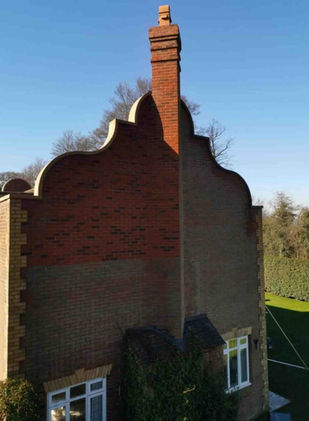
Experienced Team
Competitive Prices
100% Customer Satisfaction
Preserving and Protecting Historic Properties
Historic building conservation is a vital practice that preserves the integrity and character of heritage structures, ensuring they withstand the test of time while maintaining their original craftsmanship and materials.
Over time, exposure to the elements and natural wear can cause deterioration in historic buildings, leading to structural vulnerabilities and a loss of architectural character. Our expert conservation services ensure the preservation, stability, and timeless beauty of your heritage property.

.jpg)
Conservation Specialists
Historic building conservation is essential for maintaining structural integrity, weather resistance, and architectural authenticity. Deterioration over time can weaken masonry, leading to instability, but expert restoration strengthens and protects the structure, preventing further damage and ensuring longevity. Careful preservation techniques also safeguard against moisture, frost, and environmental wear. Additionally, conservation work enhances the visual appeal of heritage properties, revitalising their original character while preserving historical accuracy.
What We Offer!
At Kent Building Group, we are dedicated to preserving the authenticity of historic properties. Our expert team specialises in a wide range of conservation services, including lime plasters and mortars, heritage brickwork, stone restoration, brickwork, faience and terracotta restoration, carpentry and glazing, and more. By combining traditional craftsmanship with modern techniques, we ensure that the original charm and integrity of your property are maintained. Whether it’s restoring architectural metalwork, performing leadwork and roofing, or carrying out stone carving and repair, our comprehensive approach to historic preservation guarantees the longevity and beauty of your building.

Why choose us for historic conservation?
Expert Craftsmanship
Our skilled conservation specialists bring years of experience and a meticulous approach to every historic restoration project. We are dedicated to preserving and enhancing the beauty, strength, and authenticity of heritage buildings with expert craftsmanship and attention to detail.
Quality Materials
We use high-quality, heritage-appropriate materials carefully selected to match and complement the existing structure. This ensures a durable, long-lasting restoration that preserves authenticity while protecting against the elements.
Comprehensive Service
From the initial assessment to the final cleanup, we offer a comprehensive repointing service that handles every detail with precision. Our aim is to ensure a seamless and stress-From the initial assessment to the final touches, we provide a thorough conservation service, managing every detail with care and expertise. Our goal is to ensure a smooth, hassle-free restoration process that preserves your building’s heritage.free experience for you.
Historical Sensitivity
For heritage and period properties, we use methods and materials that are historically authentic, ensuring the preservation of your property's distinct character and charm.
Frequently asked questions
A few recent projects


















